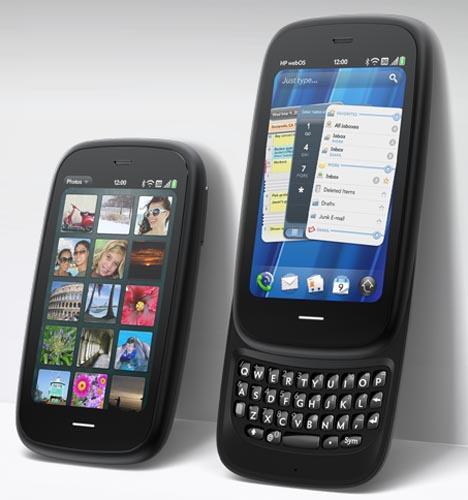
Yesterday, HP unveiled three new devices: The HP Veer, the HP Pre 3, and the HP TouchPad. These webOS-based devices are meant to usher in a new era for HP and webOS. More to the point, they are the first webOS-based devices to not feature Palm's name on them. While it saddens me to know that Palm is now officially gone, I can take some solace in knowing that their hard work in webOS will be kept alive. And while I'm not completely sold on the tablet experience, even if I want to be, I believe that the Pre 3 is where HP has a chance to really show where they stand in the smartphone market moving forward.
For Palm, it was beginning to look like the company didn't much care about the competition, and was just following their own plan -- which didn't make sense to anyone. The Pre was a success in its unique, pebble-like form factor, and webOS was a breath of fresh air into the smartphone market. Palm had created something genuinely unique. And then the Pixi released, and people scratched their heads. It wasn't exactly what they were hoping for from the company, but in all honesty, the Pixi isn't a bad phone. When the Plus variations launched for both handsets, people were already beginning to clamor for "new" devices. Something different.
But, that didn't happen. Consumers were told new handsets were coming, but dates weren't provided. People were left to wait and speculate. When HP purchased Palm, people were wondering if that would be the end of Palm as a whole, what would happen to the development of webOS, and more importantly, if there would be new smartphones ever released. HP was quick to point out that they were fully committed to webOS, and that we would indeed see it on new devices in the future. Yesterday saw the official announcement of those new devices, with another promise that more were coming.
Sadly, the Pre 2 wasn't a contender. Despite the fact it launched with webOS 2.0, and had plenty of cool new features ready to go, there were too many similarities between the Pre 2 and the original device that people didn't even give it a second look. There were even wireless carriers around the globe deciding against carrying the device. And we still don't have the Pre 2 in the United States, available directly from a carrier. You can get your hands on it unlocked, sure, but that's not really the same thing (is it better, though?). Verizon is still waiting to launch it, and whatever that hold up is (iPhone?), who knows. (The Pre 2 has gone up for pre-order through Verizon. Anyone really thinking about buying it?) But, hearing the announcement about the Pre 3 got me energized again. webOS' upgrades are in of itself worth looking at, and HP's improvements to the hardware can't be ignored.
I'm sour at the fact that the designers of the Pre 3 didn't give us a new handset, with a different design. While the original pebble-shape of the Pre was great, I wanted something different. The portrait slider has been done, especially in the Pre family of devices -- it was time to give us something else. Sure, it has a bigger keyboard -- I just wanted something that looks different. But, this is what we have. I'll take it, if that means I can have a 1.4GHz processor, and a bigger screen. The 3.6-inch display, with its 480 x 800 resolution may not be the biggest or sharpest, but it's certainly a huge improvement to its predecessors.
I want the Pre 3 because I love webOS. I want the Pre 3 because it has a big screen (I'm currently using a device with a 3.7-inch display, so I won't be losing much at all). And I want the Pre 3 because I believe it will be a good judgment as to where webOS is going, and how well HP is handling things from this point on. I want the Pre 3 because I don't have my Pre Plus anymore, and I don't want the Pre 2 at all. Oh, and there's also that whole thing about no more Over the Air (OTA) updates to the original Pre and Pixi devices. i just hope that the App Catalog gets more quality applications, and soon.
If you're planning on getting the HP TouchPad, do you intend on shelling out the money for the Pre 3 as well? And will it matter which carrier launches the device here in the States? Or, are you waiting to get your hands on the Veer? Let me know in the comments below.